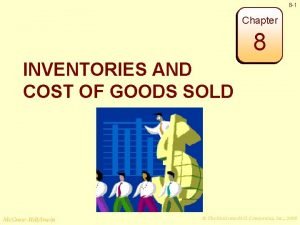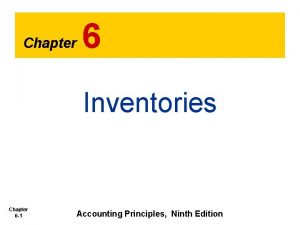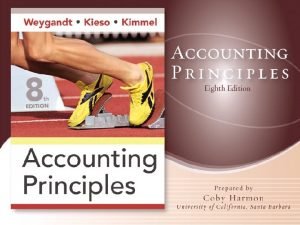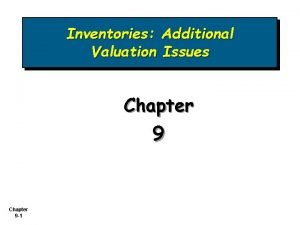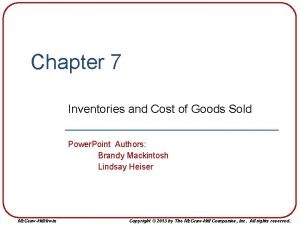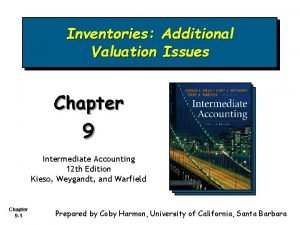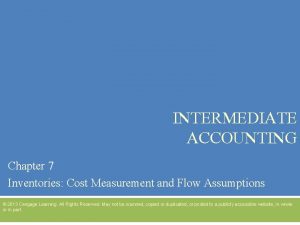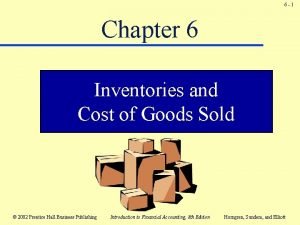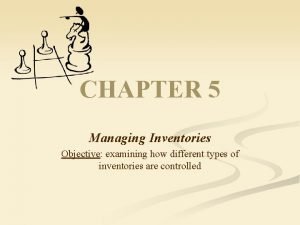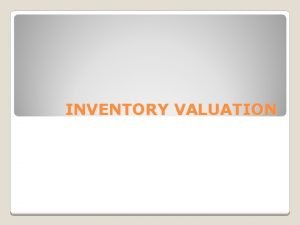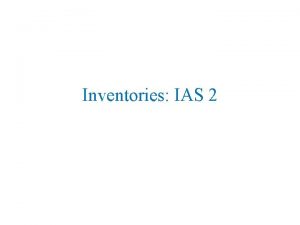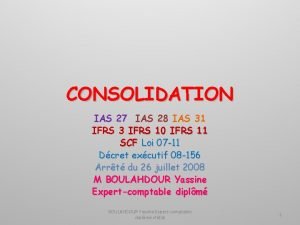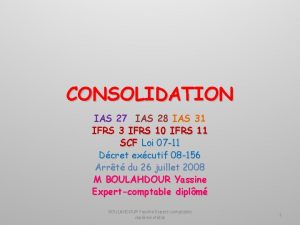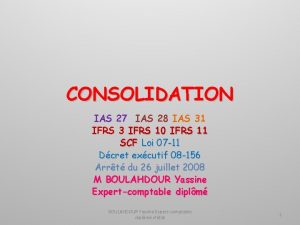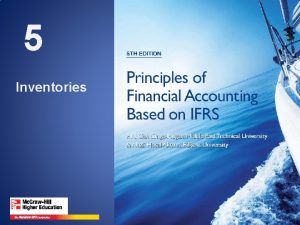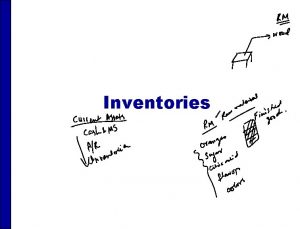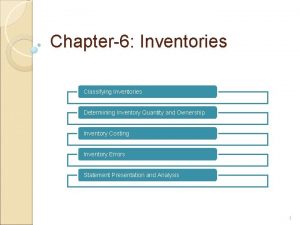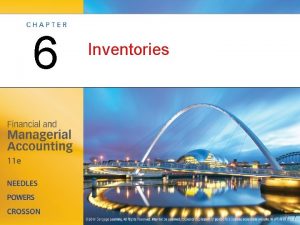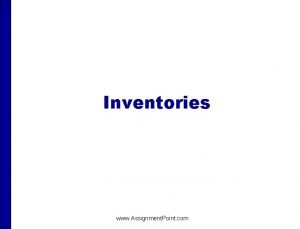Chapter 12 IAS 2 Inventories and IAS 10











- Slides: 11

Chapter 12 IAS 2 Inventories and IAS 10 Events after the reporting period

IAS 2: Inventories are assets that are: vheld for sale vin the process of production vmaterials that will be used in the production process Inventory can be categorised into: v. Raw materials v. Work in progress v. Finished goods IMAS 2

Measurement of inventories Inventory is valued at lower of: v. Original costs (not replacement cost) v. Net realisable value (Estimated selling price – costs to complete – costs to sell) Original cost consists of costs of purchase, costs of conversion and costs to bring inventory to its present location and condition. Cost of conversion may include production overheads which should be allocated based on normal production (P 1 Absorption costing) IMAS 3

Calculation of costs Inventory should be valued at cost – either the actual cost of an item (unit cost), or, if there a large number of items in inventory which makes this impractical, a reasonable approximation to actual cost should be used. The most common approximations are: v. First in first out (FIFO). The closing inventory is assumed to con sist of the latest purchases, i. e. oldest inventory is sold first. This means th e closing inventory will be valued at the most recent purchase pri ces. v. Average cost - The weighted average cost is calculated by taking the total purchase price of all units purchased in the period divided by t he number of units purchased in the period. This can be calculated IMAS using periodic or a continuous method 4

Disclosure The main disclosure requirement of IAS 2 Inventories are: v. Accounting policy adopted, including the cost formula used v. Total carrying amount (raw materials, wip, finished goods) v. Amount of inventories carried at NRV v. Amount of inventories recognised as an expense during the period v. Details of circumstances that have led to the write-down of inventories to their NRV

IAS 10: Events after the reporting date The purpose of IAS 10 is to define to what extent events that occur after the reporting period should be recognised in the financial statements. It is a fundamental principle of accounting that regard must be made to all available information when preparing financial statements. This must i nclude relevant events occurring after the reporting period, up to the date on which the financial statements are authorised for issue. IMAS 6

The objective of IAS 10 is to: vdefine the extent to which different types of events after the reporting period are to be reflected in financial statements vdefine when an entity should adjust its financial statements for events after the reporting period; vset out the disclosures that the entity should provide about the date the statement of financial position was authorised vspecify disclosures required about events arising after the end of the reporting period IMAS 7

Definition IAS 10 defines an event after the end of the reporting period as those events, favourable and unfavourable, that occur between the end of the reporting period and the date when the financial statements are authorised for issue. ’ IAS 10 identifies two main groups of such events: Adjusting events – those events that provide evidence of conditions that existed at the reporting date Non-adjusting events – those that are indicative of conditions that arose after the reporting date. ** Non-adjusting events should be disclosed if they affect users understanding of FS. IMAS 8

Going concern If an event after the reporting date indicates that the entity is no longe r a going concern, the financial statements for the current period should not be prepared on the going concern basis. IMAS 9

Non-adjusting events disclosures The note should disclose v. The nature of the event. v. An estimate of the financial effect, or a statement that it is not practicable to make such an estimate. The estimate should be made before taking account of taxation, with an explanation of the taxation implications where necessary for a proper understanding of the financial position. v. The date the directors approve financial statements. The date on which the financial statements are authorised for issue should be disclosed IMAS 10

Disclosure The note should disclose v. The nature of the event v. An estimate of the financial effect, or a statement that it is not practicable to make such an estimate. The estimate should be made before taking account of taxation, with an explanation of the taxation implications where necessary for a proper understanding of the financial position v. The date the directors approve financial statements. The date on which the financial statements are authorised for issue should be disclosed
 Chapter 8 inventories and the cost of goods sold
Chapter 8 inventories and the cost of goods sold Principles of accounting chapter 6 answers
Principles of accounting chapter 6 answers Inventory costing methods
Inventory costing methods Chapter 9 inventories additional valuation issues
Chapter 9 inventories additional valuation issues Chapter 7 inventories
Chapter 7 inventories Lower-of-cost-or-market
Lower-of-cost-or-market Dollar value lifo
Dollar value lifo Chapter 6 inventories
Chapter 6 inventories Informal and formal assessments
Informal and formal assessments Non recycled inventories in housekeeping
Non recycled inventories in housekeeping Inventories mnemjian
Inventories mnemjian Juloidian inventories
Juloidian inventories
